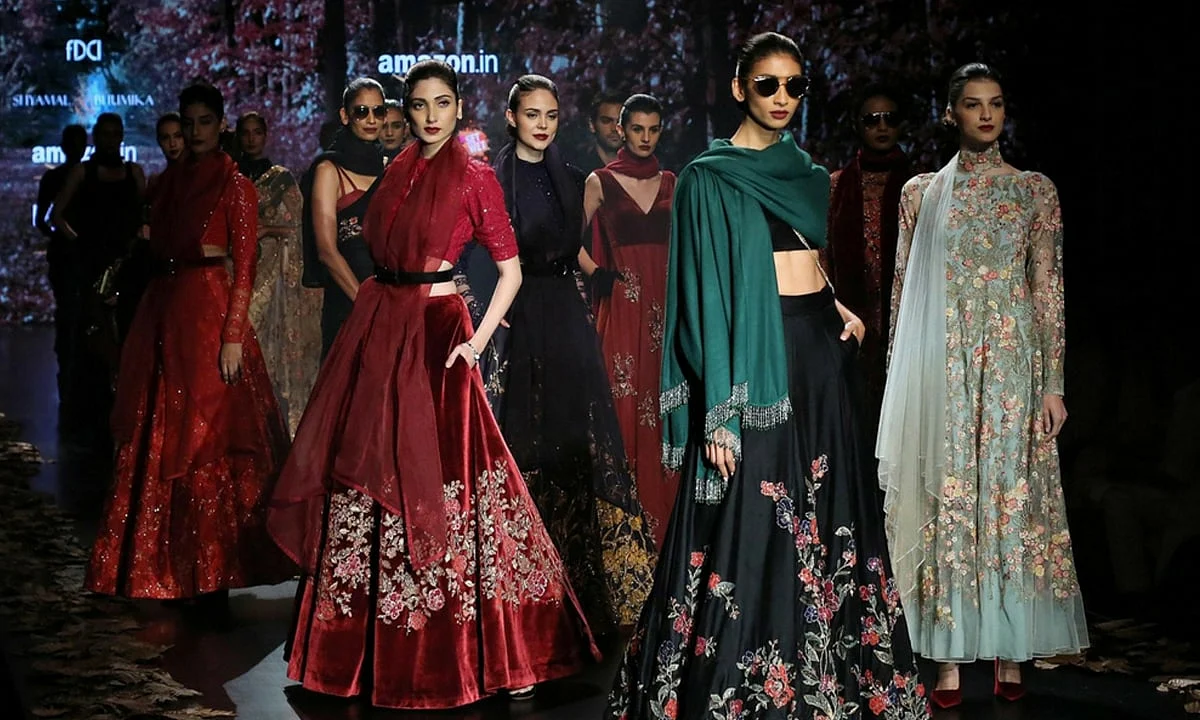Catwalks, celebs, and couture: How India’s fashion weeks rewrote the rulebook on what’s hot and what’s not
India’s fashion weeks have rewritten the rulebook, blending business with spectacle, celeb power with couture, and tradition with modernity like never before.

As fashion weeks in India celebrate their 25th anniversary, it is interesting to examine these events and their purpose. There was a time when many viewed fashion shows or fashion weeks as mere entertainment. On the contrary, fashion weeks are trade events where key buyers and members of the media attend to preview fashion designers’ collections—Spring/Summer and Autumn/Winter—each year.
Globally, fashion weeks are serious trade events where designers present their collections for the season before invited buyers and members of the media. In Western countries where fashion weeks are held in key cities such as New York, London, Milan, and Paris, attendance is determined by the designers. First, applicants must apply for accreditation with the respective fashion bodies—such as the Council of Fashion Designers of America (CFDA), Camera Nazionale della Moda Italiana in Italy, the British Fashion Council in the UK, and the Fédération de la Haute Couture et de la Mode in France—along with their local address in the host cities. The organizing bodies then circulate the names of journalists or buyers to all participating designers. After reviewing their credentials and publications or stores, designers decide whom to invite and where they will be seated. Invitations are then sent by individual designers to the provided local address. Mere accreditation does not guarantee entry to the show area.
The privilege of front-row seating is reserved for key members of the media, relevant buyers, and individual clients of designers. Pre-sees (a preview of selected pieces shown to buyers and media before the main show) and re-sees (a closer inspection of the collection post-show) are standard practices.
Fashion weeks are crucial to the industry as they provide buyers and journalists with a preview of upcoming trends. Line sheets (documents listing the order of garments on the runway with photos, fabric details, sizes, and prices) are placed on seats, allowing potential buyers to mark their choices while watching the show. Collections are presented one season in advance, with orders placed either immediately or within a few days. However, a single order is insufficient; repeat orders are essential for a collection’s success, often coming weeks later based on sales performance.
Proximity to the runway is important for relevant attendees to observe the overall look closely. A designer's vision extends beyond garments to shoes, headpieces, hairstyles, and accessories. Models serve as walking mannequins, meant to showcase the clothing without distraction. In the West, models walk with neutral expressions and minimal movement, beginning their careers in their late teens. Unlike in India, Western fashion weeks do not have a "Grand Finale." A fashion show marks both the beginning and the end of the week. Celebrities may attend as clients but are never featured as "Showstoppers," a concept absent in Western fashion weeks.
Beyond the business it generates for designers and buyers, fashion weeks significantly benefit host cities such as New York, London, Milan, and Paris. Hotels operate at full capacity, restaurants and bars see increased footfall, and transportation services experience a surge in demand.
Indian fashion weeks, however, differ in several ways. Organizers are more generous with their offerings. Once accredited by the Fashion Design Council of India (FDCI), designers and buyers automatically gain full access to all shows. Journalists are often invited directly, without requiring accreditation. Seating arrangements are determined by organizers and designers. Complimentary food and beverages are provided to buyers and journalists, often leading to complaints about the F&B offerings, despite the availability of buffet meals, coffee, snacks, and alcoholic beverages in lounges. In contrast, at New York, London, Milan, or Paris fashion weeks, attendees must purchase their own food and drinks.
Recommended Stories
Fashion weeks in India also take on a celebratory tone. Some shows incorporate singers and dancers on the runway, while models may walk with smiles, sways, or even dance. These elements contrast with the more restrained presentations seen in the West. Another unique feature of Indian fashion weeks is the presence of Showstoppers—film stars who are paid substantial sums to walk the runway at the end of shows. This strategy ensures media coverage, as Indian publications prioritise celebrity appearances over deserving designer showcases. Consequently, many noteworthy collections receive little to no coverage.
Each season, Indian fashion weeks conclude with a Grand Finale, a large-scale show that provides extensive visibility to both the presenting sponsor and the featured designer. It is the most sought-after event of the week.
Fashion in India has come a long way, as have fashion weeks. Several globally recognised Indian designers—including Manish Arora, Sabyasachi Mukherjee, Rahul Mishra, and Gaurav Gupta—began their careers at Indian fashion weeks before gaining international acclaim. As these events celebrate their 25th anniversary, they continue to offer hope that Indian fashion will further solidify its global presence in the years to come.
Fortune India is now on WhatsApp! Get the latest updates from the world of business and economy delivered straight to your phone. Subscribe now.